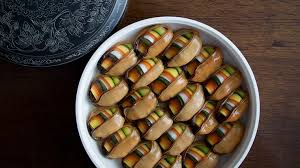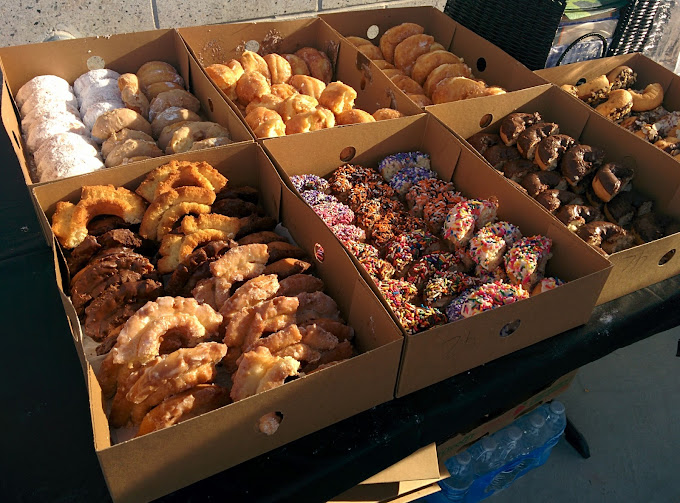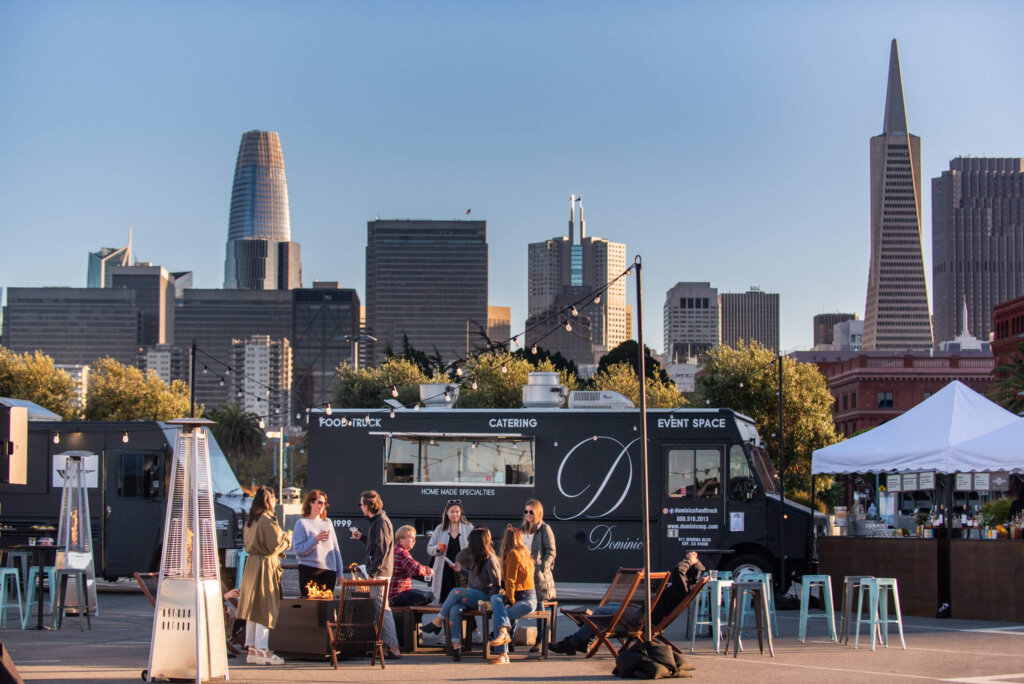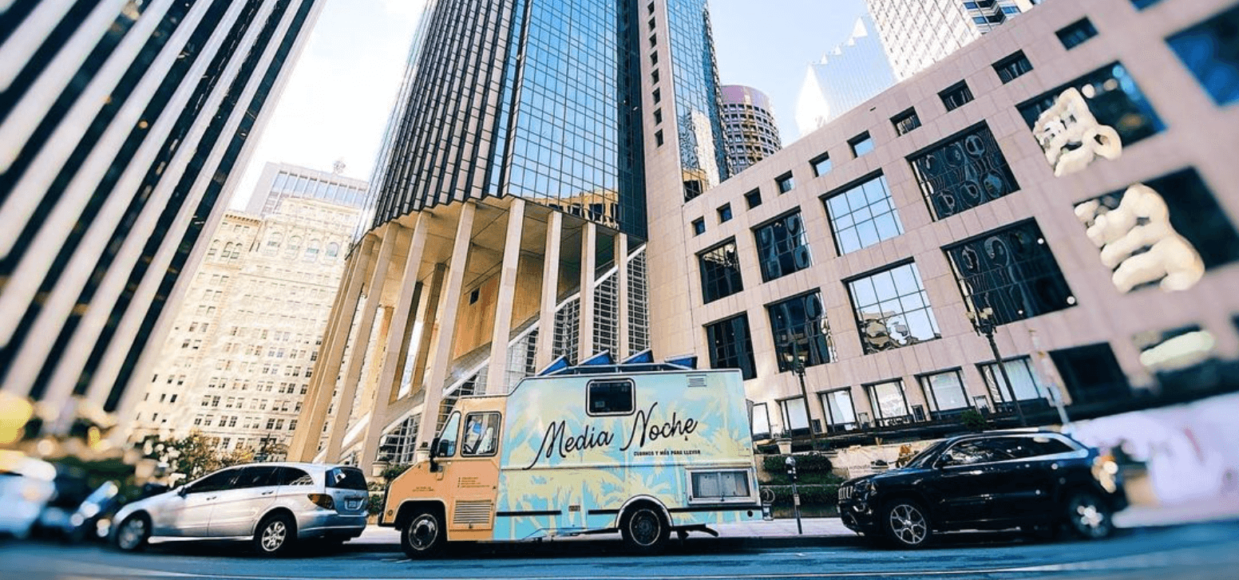
When Jessie Barker and Madelyn Markoe opened the brick-and-mortar Mission location of Media Noche in early 2017, the restaurant made a huge splash on the San Francisco dining scene for many reasons, including its delicious sandwiches, a prime location and flamingoes. Yes, flamingoes. More on that in a moment.
One of the most constant “wishes” among San Francisco diners is for more Caribbean-cuisine options. There certainly are restaurants from Puerto Rico, Jamaica and other islands around the Bay Area. But the City itself? Not really, until 2017 when Media Noche arrived with Cubano sandwiches, ropa vieja bowls, Cuban coffee, and a tropical getaway-evoking design. And then there’s the restaurant’s exterior flamingo mural by San Francisco artist fnnch, which came before his Honey Bears popped up all over the city during the pandemic. That mural happened to arrive right around the same time that Instagram became the thing for the food cognoscenti to share photos in. On cue, that mural became the must-photograph anchor of a thoroughfare that included Lazy Bear, Wildhawk and the sadly now-closed Prairie. Everything clicked for Media Noche as the right place at the right time.
But the road to Media Noche began before 2017 and even before Barker and Markoe met while working together at Tres Tequila Lounge & Mexican Kitchen in SoMa. As a kid, Barker loved cooking and food in general, explaining “When I recognized I could make a career out of this, I said sign me up!” Markoe had a similar youth surrounded by a deep interest in food, explaining, “I grew up going to the Marin Farmers Market every Sunday and, naturally, became inspired by these beautiful ingredients and how to use them when cooking with my mom.”
When it came to deciding a restaurant concept on their own, there were multiple factors that led to opening Media Noche. Barker explained to us, “Growing up in Los Angeles with my father’s side of the family hailing from South Florida, we ate Cuban food frequently throughout my childhood. It was something I missed after living here for nearly a decade, and as incredibly diverse and wonderful as our food is in the Bay Area, I always felt there was a hole when it came to an unfussy Cubano or the universally comforting Picadillo.” The two left their jobs in late 2015 and traveled to Cuba. “It was in between perfectly tart daiquiris and late nights of dancing in Havana,” recalls Barker, “that the early seeds of Media Noche were cultivated.
Barker largely focuses on the culinary side, while Markoe runs the business and marketing elements for Media Noche. After a little over four years after opening in the Mission, Media Noche’s food truck started driving and serving Cubanos in late summer 2021. It’s an exciting expansion and also an interesting learning experience for a restaurant to add a mobile side to its business model during the pandemic.
Here’s how it all came about—straight from the mouths of the founders.
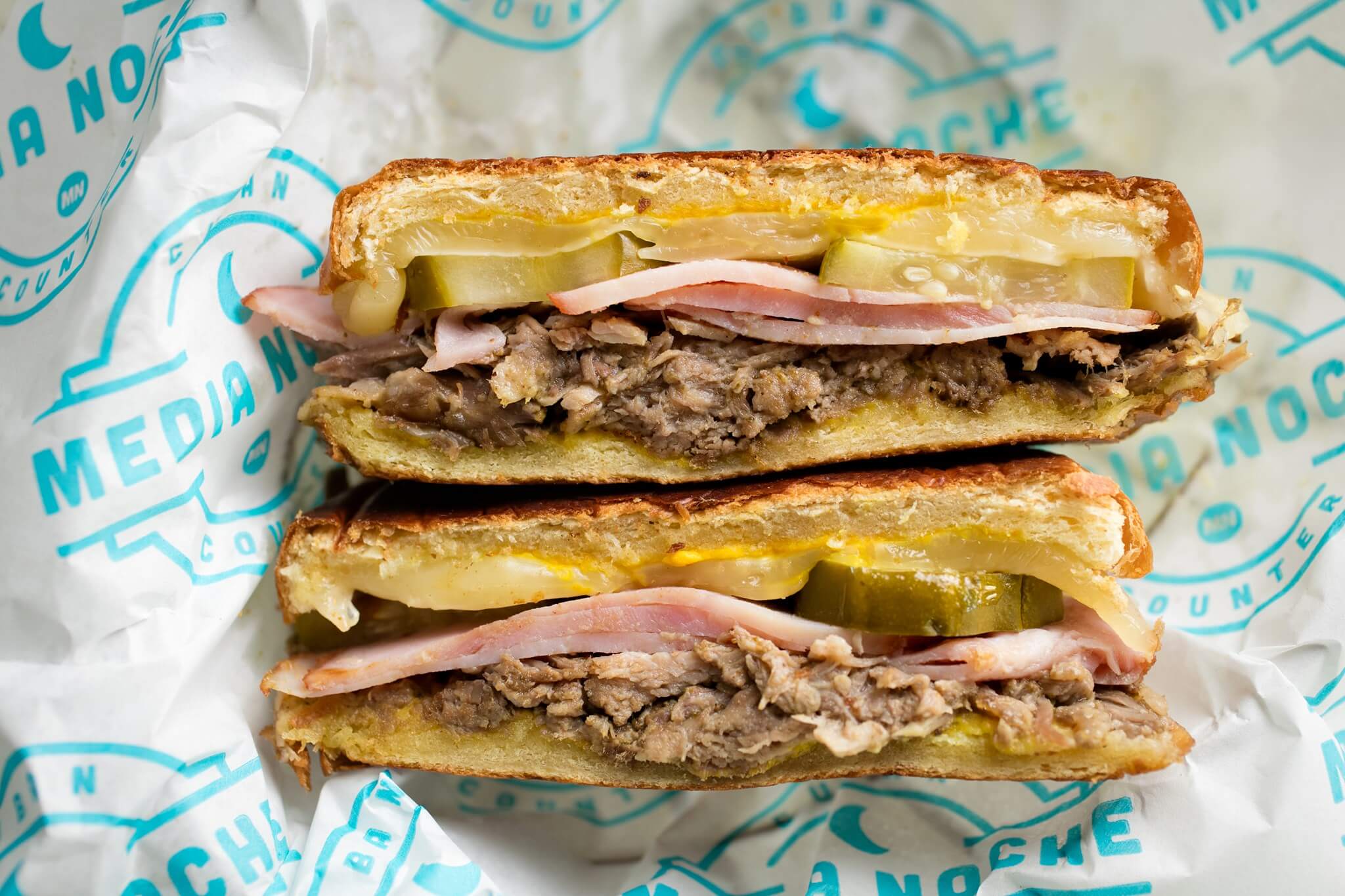
1. How did you become interested initially in the food business?
MM: The food business found me. I used food as a medium for creativity and it helped me feel connected to the world and the wonderful community of restaurateurs and small business owners. I have an introverted process by nature, but this business helped me feel safe to step outside of my comfort zone and express myself while meeting other like minded people, and that felt really good.
JB: My first and the majority of my memories are food-based. Growing up in the Bay Area, I’ve known since I was very young that I would grow up to be in the food world in some capacity. After many stints in restaurants though high school and college, I moved to NYC to pursue a Master’s Degree in Food Studies and Food Management at NYU. I worked in restaurant PR, marketing and event management but always felt the pull back to the pulsing energy of the restaurant floor and knew I wanted to eventually open my own one day.
2. Why did you decide to start your mobile food concept?
MM: We explored second brick and mortar locations, and on two different occasions came very close to signing leases. We ran into many roadblocks that felt increasingly difficult to push through, and at the end of the day, the deals just didn’t feel right for us. This was just before Covid-19, so looking back at the emotional roller coaster those times were, it was for the best because I can’t say for certain we would have been able to open with the pandemic looming. We were still determined to scale our business after 3 years of opening our first brick and mortar, and going mobile allowed us to utilize each of our strengths more effectively- myself being a strong logistical operator and Jessie having a background in events, catering and client relations. We knew nothing about food trucks at the time, but it felt like a wise investment (monetarily much less than a brick and mortar) for our business given these unprecedented times we’ve all been faced with in our industry.
3. What’s your cooking or food philosophy?
MM: Don’t be afraid of what you don’t know. I think it’s really important to stay open and curious about food. It allows for change, evolution and inspiration and these things are integral to fostering education and growth, both personally and in the business.
4. What are the biggest unknown challenges of running a food truck in the Bay Area?
MM: The hills and freeways! I had never driven a truck before, and the non-existent power steering while going 55 on the 101 is nothing short of terrifying. We’ve had to put some work into helping our team navigate the best routes to each location to avoid potential hazards or safety risks. It’s also been a challenge to figure out which locations work for us. We would love to participate in a variety of locations and events, but you have to make tough decisions if the operational costs don’t make sense in conjunction with revenue, labor and travel distance.
5. What are some changes that your truck has made because of the pandemic?
MM: The truck itself was a change for our business in response to the pandemic. We opened mid-September, and luckily things have been relatively smooth for us. It’s been great to be in the “outdoors” and serve neighborhoods that were inaccessible for folks when our Mission location was the only option. The flexibility and freshness of it all has infused a lot of life back into our concept, despite the pandemic.
6. What’s your favorite dish at your food truck? And what’s your favorite dish at another food truck?
MM: I adore our Media Noche sandwich. It is something that is so unique and reminiscent of Miami and very comforting in a nostalgic way. Right now, I’m very much vibing with the “Keto Taco” from the El Fuego food truck and Al Carajo’s Agua Chile.
JB: Ceviche from Al Carajo; Crispy queso tacos with nopales from Al Pastor Papi!
7. What’s something that sets your business apart from other food businesses?
MM: We love interacting with guests and meeting new people. We always bring a warm level of hospitality and engagement to our service, even though the service itself is minimal. Guests really seem to appreciate the personal connection, and we love providing an authentic and memorable experience every time someone orders. We also offer a kids menu, which is something you don’t see often on trucks or in restaurants, but it’s nice to provide an accessible menu to families so there is a little something for everyone.
8. What advice would you give someone who wants to start a food truck?
MM: It’s not easy, but it can be extremely rewarding in magical ways. Understand that there will be many ups and downs on the journey and at times you will be faced with burnout and difficult challenges, but it feels really good when you bring a genuine smile to someone’s face and make their day a little brighter with all of your hard work and the obstacles you’ve had to overcome. Lean into the give and take, the good and the bad, and enjoy the ride.

